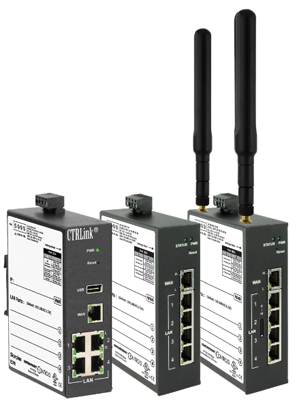
To send messages across different subnets using an IP router, the IP device provides the option to set a Gateway address. Communication packets destined for other IP devices on the same subnet are sent directly but to communicate to any device on a different IP network, the message has to be sent to the IP router so that it can forward the message to the other network. Hence the Gateway address specified on the IP device is the IP address of the IP router serving that subnet. An incorrect Gateway address on the IP device is one of the most common setup issues when IP router features, such as Port Forwarding, Port Range Forwarding or NAT, don't work as expected.
Contemporary Controls IP routers have a built-in DHCP server for the LAN interface. Any IP device with DHCP client ability automatically gets the correct Gateway IP address setup as part of the DHCP IP address lease provided by the IP router. If the IP device uses a static IP address configuration, then the user is responsible to set the correct IP address, subnet mask and the gateway address.
Some legacy devices such as PLC don't have the setting to enter a Gateway IP address which makes accessing them across subnets an issue. Devices with multiple MACs/Ethernet ports with 2 IP addresses for different subnets also have the ability to setup a single gateway address thereby limiting the ability to access them across subnets from the second Ethernet port- as the first/primary Ethernet port has the Gateway address setup to match its subnet configuration. The EIGR Series provide the Masquerade option configurable via the webpage that allows the ability to communicate to these IP devices across subnets. The Masquerade option modifies the IP packets to make them appear as originating from the IP router which is the same subnet as the device and the IP client device can then respond back without the need for a Gateway IP address. The IP router then routes the packet back to the originating device across the other subnet. This makes Port Forwarding and NAT possible for these devices along with accessing them remotely over VPN. These features are applicable to any IP device irrespective of its use in an application for Industrial Automation or Building Automation.
Visit IP routers or VPN IP routers page to learn more.

